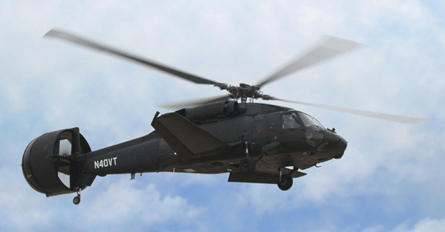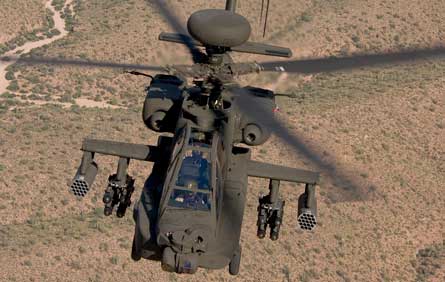Boeing is to enter talks with Piasecki Aircraft aimed at expanding its role in the company's X-49A experimental compound helicopter programme.
The X-49A, a Sikorsky YSH-60F modified with wings and a vectored-thrust ducted propeller, has been in flight test since July (pictured below), with Boeing providing technical support but no funding. However, the company is now ready to start investing its own funds and take a more direct role in Piasecki's project, says Pat Donnelly, Boeing's director of advanced rotorcraft.
 |
|---|
© Piasecki Aircraft |
Boeing's interest is rising as Piasecki moves close to completing the first phase of flight testing and prepares to enter the project's more ambitious second phase. During the current phase, Piasecki's team has sought to prove that the X-49A can operate within the full envelope of the baseline YSH-60F. In the next stage of work, the company intends to demonstrate the compound helicopter's faster speed using its unique propulsion system and drag-reduction measures.
Boeing wants to expand its role in the programme for several reasons, says Donnelly. Primarily, it wants to know whether its technology could be applied to a future US Army requirement for a Joint Multi-Role (JMR) rotorcraft, which would replace Boeing's AH-64 Apache attack helicopter (pictured below) after 2020.
After demonstrating the compound helicopter technology on the YSH-60F, Boeing will seek to transfer the concept to the Apache, says Donnelly. Boeing then may be able to offer a compound version of the type to the US Army as a "JMR-light", he adds, or assess the technology's feasibility for an all-new platform.
 |
|---|
© Boeing |
The X-49A itself could also attract interest from several potential customers, including the US Special Operations Command and the US Marine Corps, which could need an armed escort for its Bell Boeing MV-22 Osprey tiltrotors.
Boeing is actively pursuing a number of new design concepts for fast rotorcraft, and is also receiving funding from the US Defense Advanced Research Projects Agency to pursue a new design called Disk Rotor. The Bell Boeing joint venture has also received DARPA support to continue concept development of a hybrid-powered, folding-rotor aircraft, while its Quad Tilt Rotor concept remains in contention for the US Army's Joint Heavy Lift demonstration effort.
Source: Flight International



















